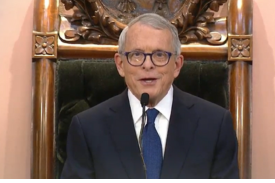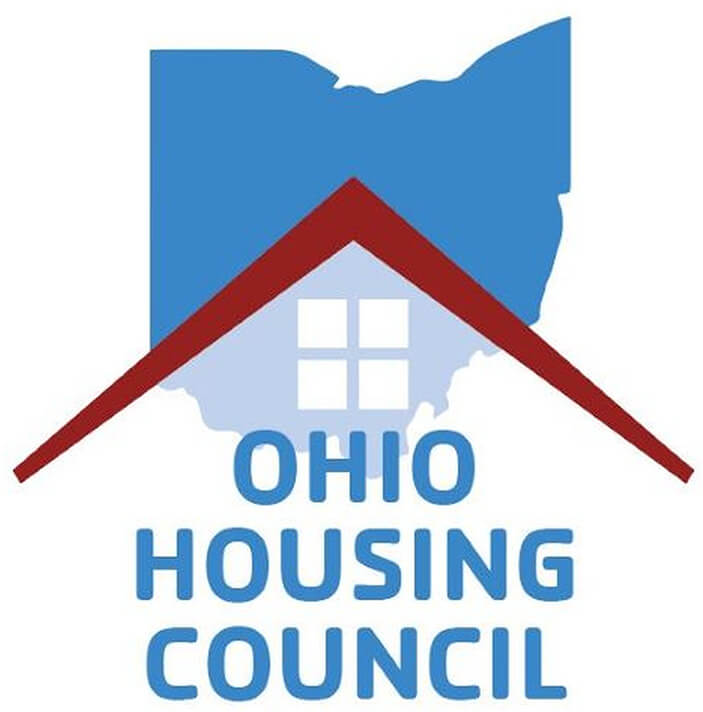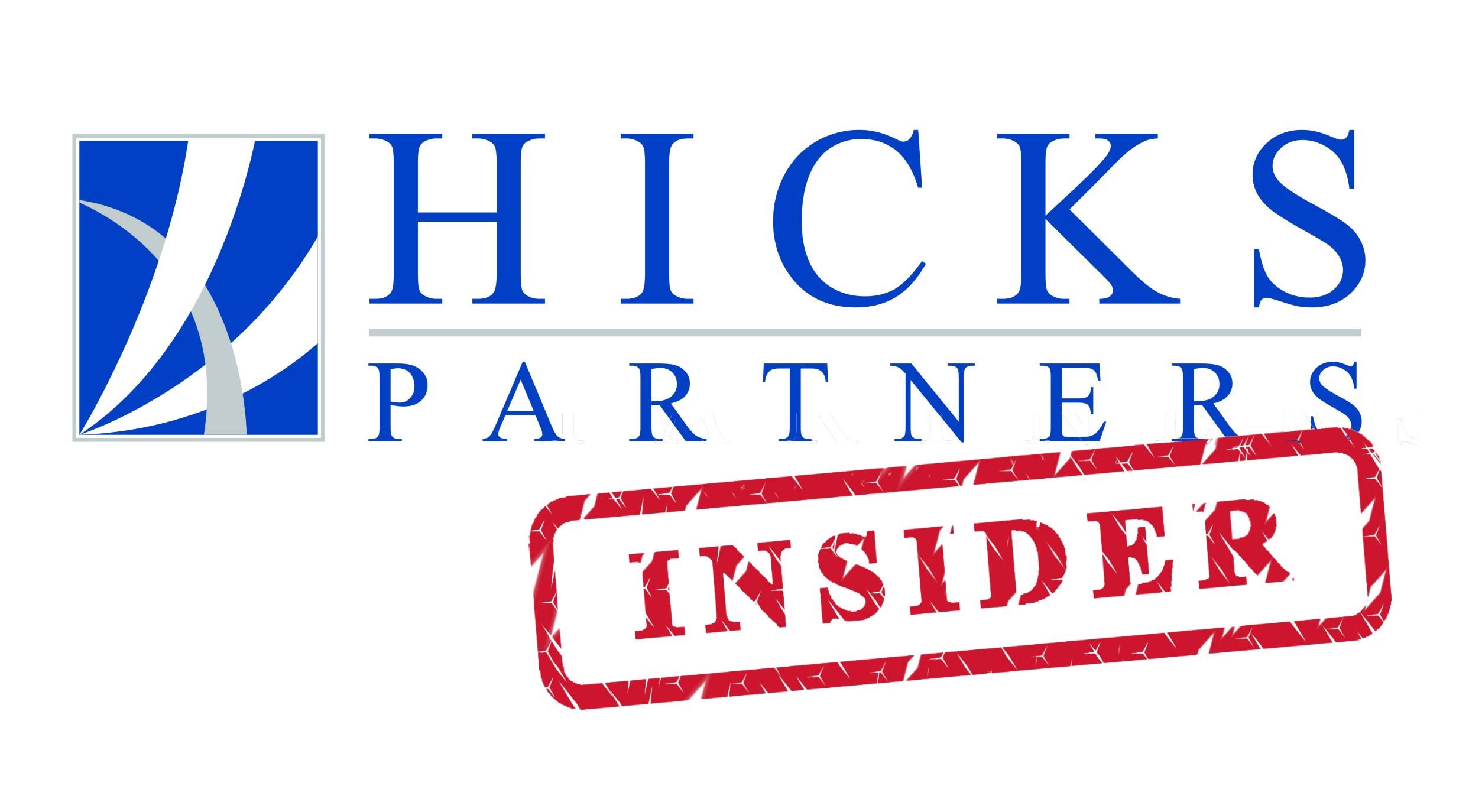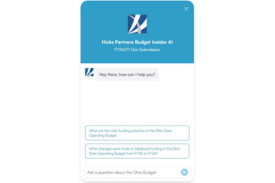| DeWine Details Vision in State of the State Address |
|
|---|
|
 |
Governor Mike DeWine delivered his State of the State Address last Wednesday, outlining his vision for Ohio's future with a strong focus on economic development and workforce initiatives. Newly appointed Lt. Governor Jim Tressel will play a significant role in these efforts, leading what DeWine dubbed the "Ohio Workforce Playbook." The former coach will work with universities, career tech schools, state agencies, and local businesses to develop regionalized strategies meeting specific workforce needs across Ohio. The Governor highlighted several economic wins with new developments expected to bring thousands of jobs statewide. He credited a business-friendly regulatory environment - with over 930 regulations removed during his administration - for enabling investments like Anduril Industries' advanced weapons manufacturing plant and Honda's electric battery plant. Despite legislative reluctance, DeWine reiterated his budget priorities, including doubling the sports gambling tax to fund stadium construction and creating a $1,000 child tax credit funded by increased tobacco taxes. Major themes and policy initiatives mentioned in the address include: Investing in Ohio’s Children - Early Literacy & Reading: The expansion of Dolly Parton’s Imagination Library has put 20 million books in young Ohioans' hands, fostering early literacy. DeWine also championed the Science of Reading, leading to measurable improvements in student literacy rates.
- Vision & Dental Care: The new OhioSEE Program will provide vision screenings, exams, and glasses for children in need, ensuring that poor eyesight doesn’t hinder academic success. A pilot Children’s Dental Services Program will bring essential dental care to underserved communities.
- Cell Phone Ban in Schools: DeWine is pushing for a statewide ban on cell phones during school hours, following success stories from Ohio districts that have already implemented such policies.
Strengthening Families & Workforce Opportunities - Support for Parents: The administration is expanding the Childcare Choice Voucher Program, making quality childcare more affordable for working families. DeWine’s proposed $1,000 tax credit per child under seven aims to ease financial pressures on young parents.
- Pathways to Employment: The Ohio Workforce Playbook will focus on training and retaining workers across all demographics—including those with disabilities, formerly incarcerated individuals, and seniors re-entering the workforce.
- Foster Care & Mental Health Services: Ohio is reducing the number of children in foster care while investing in regional child wellness campuses to ensure safe, stable placements. OhioRISE, a program addressing children’s complex behavioral and physical health needs, now serves over 42,000 youth.
A Healthier Ohio - School Health Clinics: DeWine encouraged more schools to provide students access to medical care and reducing barriers to learning.
- Mental Health & Addiction Recovery: The state has reduced overdose deaths and expanded crisis services, supporting individuals in recovery by integrating Certified Peer Supporters into workplaces.
|
|
|---|
|
 DeWine's speech balanced celebrating past achievements with setting achievable goals for his remaining time in office. Tressel's appointment signals the administration's continued focus on workforce development as key to Ohio's future prosperity. However, legislative pushback on several of the Governor’s budget and tax proposals suggests a bumpy road ahead for some of his priorities. DeWine's speech balanced celebrating past achievements with setting achievable goals for his remaining time in office. Tressel's appointment signals the administration's continued focus on workforce development as key to Ohio's future prosperity. However, legislative pushback on several of the Governor’s budget and tax proposals suggests a bumpy road ahead for some of his priorities. |
|
|---|
|
| Ohio House Finance Committee Nears Vote on Operating Budget |
|
|---|
|
 |
The Ohio House Finance Committee is set to adopt a substitute bill (HB 96) on April 1, with additional public testimony to follow before an omnibus amendment on April 8. The full House is expected to vote on April 9, sending the budget to the Senate before spring break. Legislators are also exploring changes that would redirect unspent All Ohio Future Fund dollars toward brownfield remediation, potentially infusing up to $640 million into the program. Brownfield dollars are in high demand and get allocated quickly. Other budget items include: - Tax Policy: The House is likely to reject all of Governor DeWine's proposed taxes increases—on tobacco, marijuana and sport gaming.
- Sports Stadium Funding: House Republicans are looking favorably at a proposed state bond program to help fund a new stadium for the Cleveland Browns, rejecting the plan to use new sports gaming taxes for stadium funding.
- Medicaid Uncertainty: With no final federal guidance on Medicaid funding, the House will draft the budget "in a vacuum" with potential later adjustments.
- School Funding: School funding remains a major sticking point, with calls to update the base cost inputs in the Fair School Funding Plan.
|
|
|---|
|
 The brisk timeline for House passage means the Senate will have ample opportunity to put their mark on the budget before it goes to conference committee in June. The state budget must be signed by the Governor by June 30. The brisk timeline for House passage means the Senate will have ample opportunity to put their mark on the budget before it goes to conference committee in June. The state budget must be signed by the Governor by June 30. |
|
|---|
|
Ohio "DOGE Caucus" to Tackle Government Efficiency |
|
|---|
|
A new caucus is making waves at the Ohio Statehouse, borrowing its name from Elon Musk's federal Department of Government Efficiency. The Ohio House DOGE Caucus is led by state Rep. Tex Fischer (R-Mahoning). With 25 Republican members already on board, the DOGE Caucus has prioritized simplifying government processes and cutting inefficiencies, with property tax reform emerging as a key focus area. Some caucus members have floated the idea of creating an executive DOGE agency in Ohio—echoing Musk's federal initiative. |
|
|---|
|
 With a Republican supermajority in the legislature and a Republican governor, Ohio has a unique opportunity to enact efficiency-focused reforms with fewer political roadblocks than the federal government. The DOGE Caucus is getting formed too late to have a big impact in the current budget debate but could be well-positioned to turn ideas into action in the years ahead. With a Republican supermajority in the legislature and a Republican governor, Ohio has a unique opportunity to enact efficiency-focused reforms with fewer political roadblocks than the federal government. The DOGE Caucus is getting formed too late to have a big impact in the current budget debate but could be well-positioned to turn ideas into action in the years ahead. |
|
|---|
|
Precision Targeting for Policy Influence |
|
|---|
|
Geofencing is transforming digital advocacy by enabling organizations to target ads at strategic locations. This hyper-local approach ensures advocacy messages reach intended audiences during key moments in the policy process. Geofencing is a location-based technology that delivers messages to a specific intended audience when mobile-devices enter a defined area. The technology creates virtual boundaries around specific locations using GPS, Wi-Fi, and mobile networks. When smartphones enter these zones, targeted content is delivered through mobile apps or browsers. Strategic benefits for advocacy campaigns include: - Hyper-targeted messaging reaching only relevant decision-makers
- Behavioral insights through movement patterns and engagement data
- Real-time optimization based on legislative schedules
- Competitive advantage by counter-messaging at opposition events
To maximize effectiveness, organizations should: - Target key locations and events
- Align spending with legislative cycles
- Create clear, actionable ad content with specific calls to action
- Monitor performance metrics and adjust strategies accordingly
|
|
|---|
|
 Geofencing offers a strategic advantage in how advocacy campaigns engage stakeholders. By delivering digital messaging to a specific audience, organizations can reinforce traditional lobbying activities. If you are interested in learning in how you may be able to employ these techniques, reach out to us here. Geofencing offers a strategic advantage in how advocacy campaigns engage stakeholders. By delivering digital messaging to a specific audience, organizations can reinforce traditional lobbying activities. If you are interested in learning in how you may be able to employ these techniques, reach out to us here. |
|
|---|
|
Energy Plans Advances with Key Changes |
|
|---|
|
Ohio's fast-tracked energy proposals (HB 15 and SB 2) are moving closer to full votes by the House and Senate. After another round of revisions, the House Energy Committee adopted a substitute version last Wednesday, aligning parts of HB 15 bill with SB 2 while introducing significant differences. Chairman Rep. Adam Holmes (R-Nashport) confirmed the committee will hold two hearings this week with a Tuesday session open to all testimony and a Wednesday session expected to include a vote. If passed, the bill could reach the House floor for a vote soon. The bill now includes provisions from SB 2, such as a three-year ratemaking mechanism and a streamlined siting process for priority investment areas. Major departures from the Senate plan include: - Setting a firm May 31, 2028, expiration date for all electric security plans
- Lowering the Power Siting Board's jurisdiction threshold for transmission projects from 100 kV to 60 kV
- Requiring utilities to publish heat maps and capacity maps for public review
- Extending the PUCO rate case decision deadline to 346 days
- Establishing a 180-day deadline for siting applications
- Launching an "energy-neutral" Community Energy Pilot Program
HB 15 maintains the Solar Generation Fund's 2028 expiration but mandates surplus funds be returned to ratepayers rather than allocated to school energy efficiency efforts. Additional revisions include a 25% tax rate on existing infrastructure while reducing to 7% for new generation and plant updates, immediate repeal of OVEC cost recovery, and prohibiting electric distribution utilities from owning generation. |
|
|---|
|
 With the latest revisions, HB 15 is trying to balance utility and generator interests, consumer protections, and legislative compromises. While the bill moves forward, expect further scrutiny as the debate over energy policy, grid reliability, and affordability continues. With the latest revisions, HB 15 is trying to balance utility and generator interests, consumer protections, and legislative compromises. While the bill moves forward, expect further scrutiny as the debate over energy policy, grid reliability, and affordability continues. |
|
|---|
|
Hicks Partners Launches AI Budget Insider |
|
|---|
|
As a valued Hicks Partners Insider subscriber, we’re excited to give you exclusive access to our Budget Insider 1.0, your go-to resource for the Ohio FY 2026-27 Operating Budget. Inside, you’ll find: - Key budget documents & summaries
- Expert analysis
- A mini-AI assistant trained on the latest budget data to help answer your questions
Access the Budget Insider 1.0 here: https://hickspartners.com/hicks-partners-budget-insider/ and look for more updates and refinements as the budget process proceeds. We appreciate your engagement and look forward to keeping you informed throughout the budget process! |
|
|---|
|
Our Grant Alert list is updated! Review the list of ongoing grant opportunities here: |
|
|---|
|
| |
| Hicks Partners, LLC is a multidisciplinary business consulting firm providing public relations, government affairs and business development services. We deliver powerful results for clients seeking to enhance their image, impact policy decisions, and grow their bottom line. |
|
|---|
|
|
|
|









